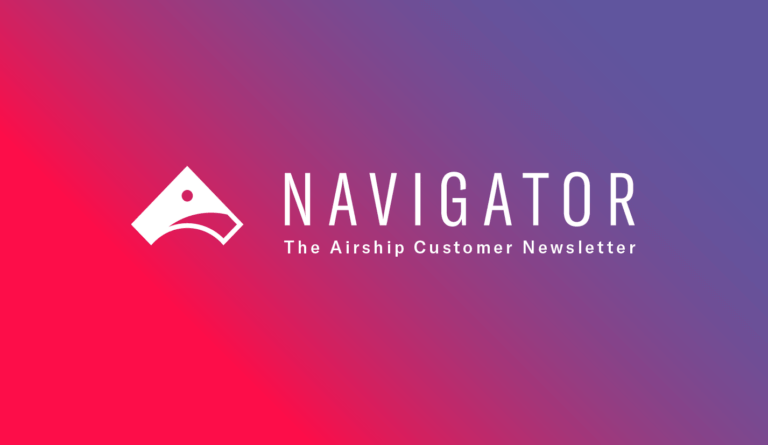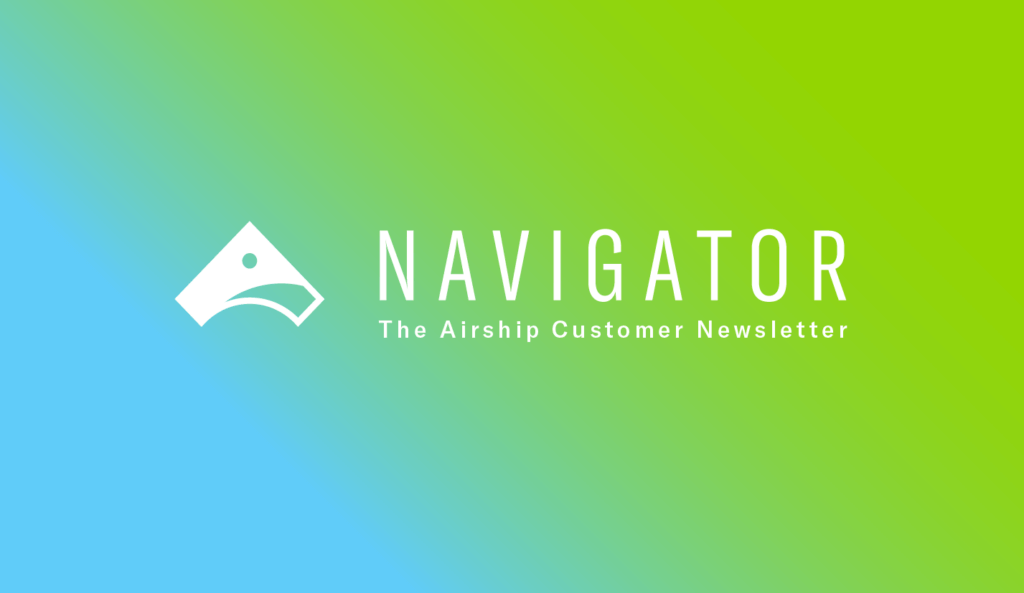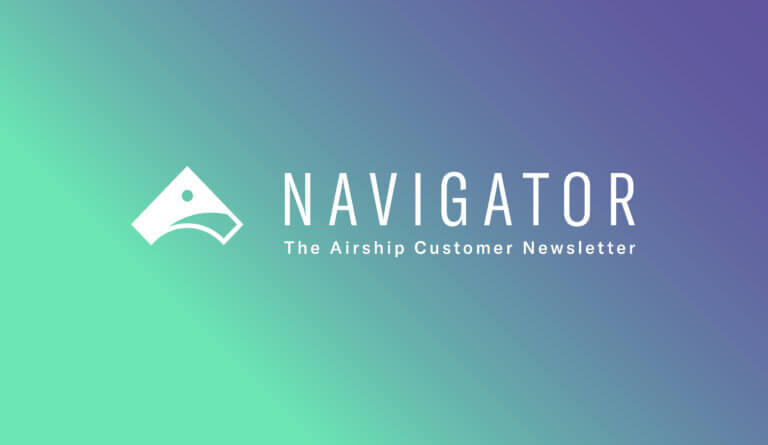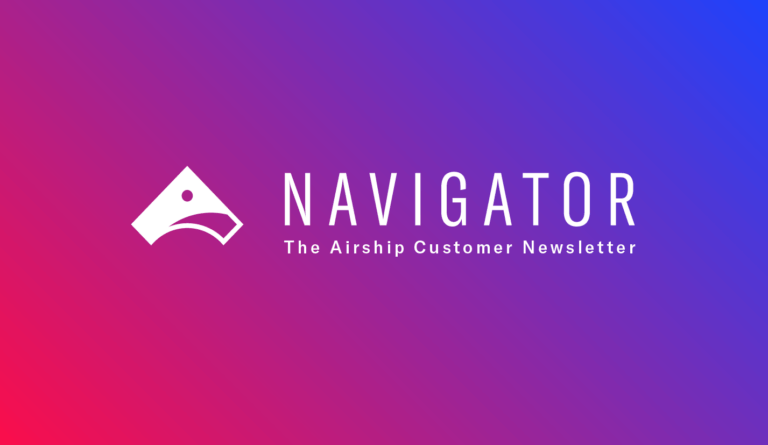
Drive High-Value Actions With Cross-Channel Customer Experiences

Emma Patterson Global Customer Marketing Lead

Share to my network
In this article
Categories
Book a meeting
Connect with our team of experts to discuss your conversion and loyalty goals, and how we can help you achieve them faster.
Book a meetingIn the last decade, brands have adjusted to mobile driving over half of their online traffic and accounting for the majority of their online sales. Mobile’s impact is not just digital: using the retailer’s app while shopping in its physical store was the smartphone behavior that grew the most YoY based on Airship’s latest consumer survey. By 2027, Forrester predicts that 70% of total U.S. retail sales will be digitally influenced (Forrester Research, Inc., “The US Retailers Customer Experience Index Rankings, 2023,” January 9, 2024). With more than 90% of time using smartphones spent in apps, eMarketer research finds mobile app customers drive 3.5X more revenue and are 3x more likely to make a repeat purchase than non-app customers. Clearly, mobile apps are the preferred destination for customers.
As leading brands work to increase conversions, frequency and customer lifetime value, they are leveraging all of their owned destinations — apps, websites, physical stores — and taking a multichannel approach to reach customers on email, SMS, mobile wallets, websites and apps. According to Forrester, “… four of the five top challenges marketers indicate they’re facing are data-related: creating a single view of the customer across channels and interactions; managing data quality issues; personalizing communications, experiences, and interactions; and driving decision-making with customer insights,” (Forrester Research, Inc., “2024 B2C Marketing Challenges And Priorities,” May 30, 2024).
Channel Rules of Thumb
The role of communication channels is to deliver customers to destinations where they can perform high-value actions, convert, register and advocate. Across the channel spectrum, there are many options for engaging a consumer, but the owned channels of push, email and SMS are the most valuable as customers opt in and costs are low compared to paid channels.
The best way to leverage owned communication channels is in unison, not in silos. Integrated campaigns across multiple channels can improve engagement rates by up to 24% compared to single-channel campaigns.
Different Channels, Different Purposes
Each channel has its place in the marketing mix. Let’s examine each channel’s core benefits.
Push Notifications are a significant source of traffic, driving customers back into the mobile app. It all started when Airship sent the first commercial push notification 15 years ago this month. Brands gain visibility on the world’s most valuable real estate — smartphone lock screens. They can deliver at-a-glance value to customers or include rich media and interactive buttons, deep-linking anywhere within apps.
Leading brands across many industries depend on the speed and reliability of push notifications, and also combine push with other channels for a cohesive strategy. Some brands skip the higher SMS cost if their customers are addressable through push or wallet notifications. Others may focus on connecting with customers in whatever channel they most recently interacted. Most marketers deep-link messages to specific app screens for continuity and to maintain a personalized approach. Fewer have the agility to connect messages with experiences, such as a social media-like Story that marketers can create, deploy and iterate on their own to generate rich visual excitement about that big sale they just messaged. Or a holiday notification that drives customers to a preference center where they select the three or four big areas on their shopping list — appliances, furniture, electronics, vacations, etc.
Email remains a cornerstone of digital marketing strategies with its ability to deliver rich, dynamic, personalized content directly to a customer’s inbox. When coupled with solid segmentation and targeting, email has a long history of nurturing leads, providing valuable educational content and driving conversions. According to Zippia, emails with personalization in their subject lines have a 50% higher open rate.
For decades, recipients of marketing emails have controlled when or if they open messages. Now, more email clients are pre-filtering emails prior to taking any action. With advancements in automation to deliver timely content based on behavior (e.g., abandoned cart or breaking news) and time zone, brands have continued to enhance email effectiveness, driving more relevancy than ever before. Brands are leveraging email for three primary destinations: the mobile website, the mobile app and the desktop website. Research shows that nearly 75% of consumers now view email on mobile devices.
SMS has the most impressive open rates of the owned channels, with 98% of SMS messages opened and 91% opened within 3 minutes of delivery. Although shortcodes have been around for more than two decades, the adoption of SMS as a marketing channel has been tempered due to higher costs relative to other owned, permission-based channels. However, commercial SMS usage is growing rapidly.
Consumer reliance on mobile devices also affects SMS usage. Because of its open-rate success, SMS plays an outsized role on mobile devices. The immediacy of SMS, which doesn’t require an app or a mobile wallet pass to download, makes it perfect for operational messaging, such as delivery notices or multi-factor authentication. More consumers are willing to share their mobile number for text messages than are willing to share their postal address. Phone numbers also benefit brands by providing a reliable key to link customers’ cross-channel interactions in order to offer a better, more personalized experience.
Providing Cross-Channel Value Across the Customer Lifecycle
The key to success lies in a brand’s ability to anticipate customer needs and execute relevant suggestions in the moment and on the channel that aligns with the customer’s preferences. It’s imperative to have an optimized multichannel communication strategy for every phase of the customer lifecycle.
The Activation phase of the customer lifecycle is the critical moment for a brand to welcome new customers and understand their preferences. Taking place in the first 30 days after download, Activation is the precursor and catalyst to long-term customer engagement.
During Activation, brands can gather notification opt-ins and preferences as part of the natural introduction to the app and its functionality.
In the chart above, “interests relevant to the brand” has overtaken “name” as a type of information consumers are willing to share with brands they love. As part of the Activation stage, brands must identify users through authentication, obtain opt-in permissions, and ideally gain communication preferences, including preferred channel, topics and frequency. Focusing on these three aspects of Activation positions brands for greater success during the Engagement phase of the customer lifecycle. One size doesn’t fit all customers. Brands must take a tailored approach to communication and, therefore, consider what types of messaging customers prefer.
During the Engagement phase, brands must reinforce their value proposition through tailored messaging. This includes driving in-app and web content to specific audiences using their owned channels (email, SMS and push). Check out Airship’s recently released Mobile Lifecycle Benchmarks Report for Engagement and see how your Engagement Score compares to industry benchmarks and what steps you can take to keep customers returning to your mobile app.
Mastering Cross-Channel Experiences Is Hard — But It Doesn’t Have To Be
Integrating your push, SMS and email strategies to drive customers to destinations where they can complete high-value actions isn’t a recommendation — it’s core to growth today. By providing value at every touchpoint and carefully cultivating customer trust by taking their preferences and known history into account, brands can capture more customer value and grow loyalty and advocacy.
We know that mastering even one channel can be a challenge. So, when it comes to orchestrating multiple channels, brands may not be sure how and where to get started. Fortunately, Airship has a dedicated team of Strategic and Technical Consultants to help you identify the best ways to drive multichannel orchestrated experiences that deliver on brand promises. Connect with one of those experts by clicking here.
Navigator is Airship’s customer newsletter covering the latest mobile industry trends, product updates, use cases, best practices and other learning resources. It’s yet another way for us to help you deliver better mobile experiences and create greater value more quickly. If you’d like to receive our monthly Navigator newsletter please sign up here.

